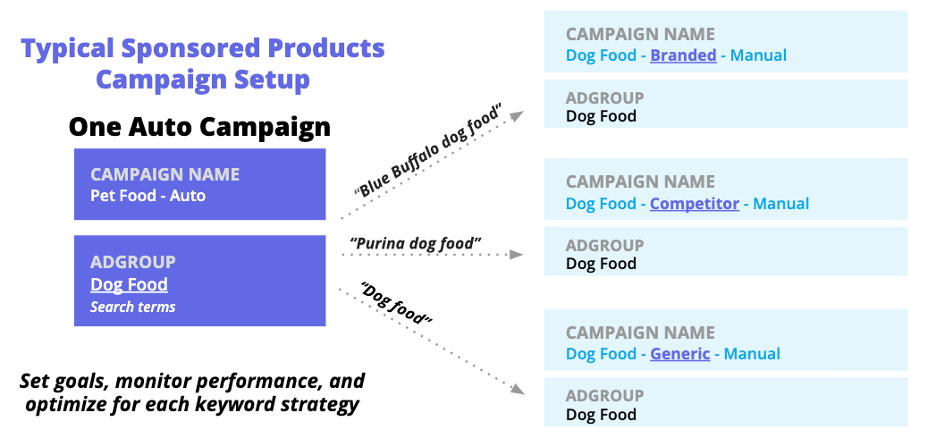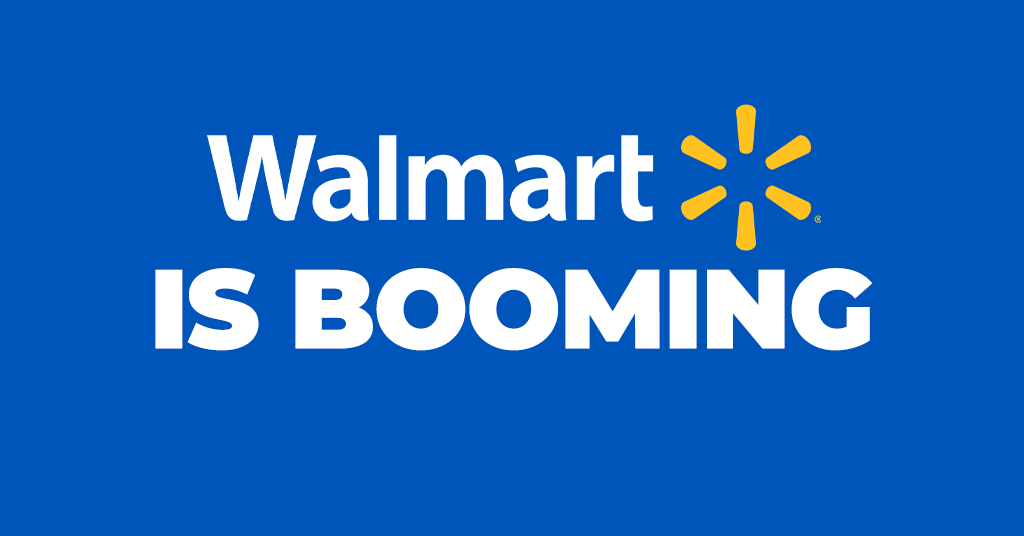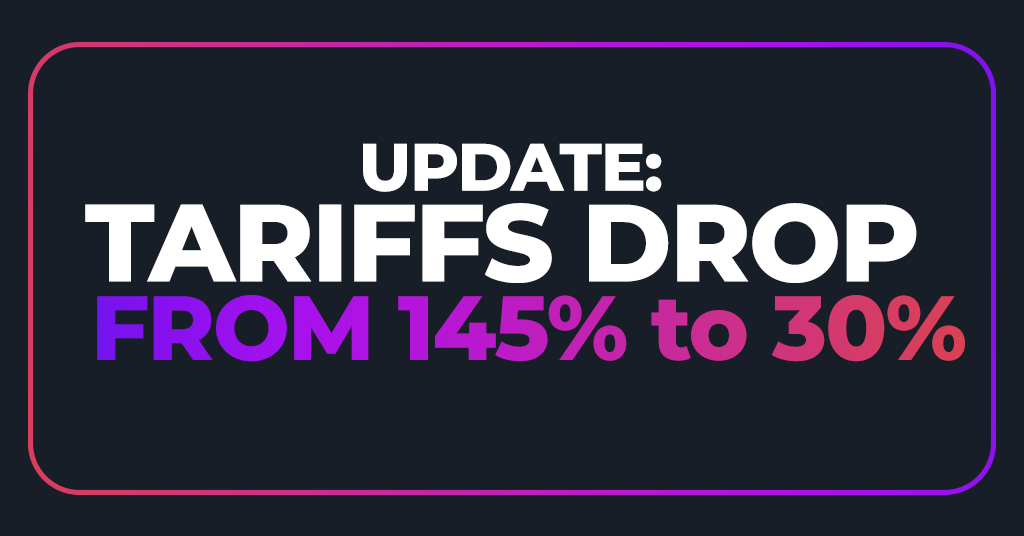This post is by Kyle Barron, Head of Sales Engineering at Teikametrics
Driving an ad click is what every brand hopes to do with their ecommerce advertising. But particularly once your Amazon business is gaining momentum, not every click is of the same value. An ad click poached from a competitor is better for your business than one on your own branded keyword that could have been captured organically. Similarly, if a click on a non-branded keyword is more likely to result in a sale (i.e. a higher conversion rate), you’d want to bid higher than you’d bid on a keyword where clicks are historically less likely to convert. Successful brands understand this, and have adopted a ‘value-based bidding’ strategy – rather than a rules-based one – in order to grow their Amazon business effectively over time.
A Change in Thinking
The nuances to bidding like the ones described above have major implications for driving sustainable business growth on Amazon. However, determining these values is an ongoing process. They are highly business-dependent and naturally shift over time, and executing against them effectively requires a new way of thinking about advertising on Amazon.
For one, a lot of sellers think that an auction win on Amazon is always good (i.e. you won an impression for your ad). The thinking goes like this: “Competition is intense. If I win impressions, I’ll win more sales/market share.” Instead of focusing on winning the most auctions, sellers should be asking themselves two questions:
1. “What’s the relative incremental value I can drive in terms of sales, if I win this impression?”
And
2. “What’s the opportunity cost that I’m losing if I don’t win the impression?”
Depending on your business, market dynamics, and the particular product you’re advertising, there’s a “right” bid for every keyword. A 1% win rate can be OK depending on organic rank, sales rank, and larger brand presence. The issue with only focusing on winning impressions is that it neglects the idea of assigning a variable value of a given click. Brands need to determine, for example, what a win is worth on your biggest category term vs. your top competitor’s brand term.
The easiest pitfall brands fall into is bidding heavily on their own branded terms. The result is that you’ll win way more impressions than you need. While the ACOS may look good, in reality, you’re likely poaching sales that you almost certainly would have captured organically.
Of course, ‘brand defense’ is a valid concern for competitive markets. If other sellers are bidding on your brand terms in order to poach your loyal customers, you may need to bid on those terms in order to defend your territory. However, in most cases brands vastly overspend on their own branded terms.
The example below shows a brand winning three different top-of-search placements on its own branded term (“mr coffee espresso”) while showing the same two products, including their best-selling model, within their ads. This makes it more likely they’ll pay for the same sale they would have made organically. The problem is exacerbated by the fact that a competitor doesn’t even show up organically until the fifth organic result. To bring this home, Amazon’s Search Term report for the most recent month shows that a full 89.5% of all organic conversions on this term occurred for the top three results, underscoring the limited incremental value.
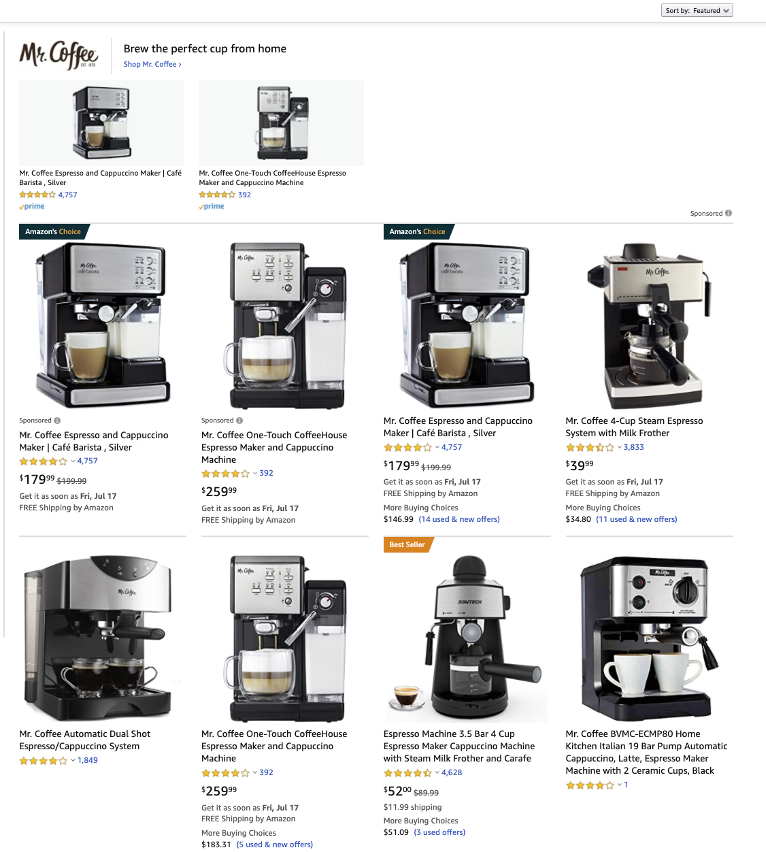
Often, problems like overspending on branded terms are supported and exacerbated by poor campaign structure and lack of goal-setting. The ability to make the ‘right’ bid on a particular keyword requires granularity and segmentation on a campaign level across several key elements:
- Keyword type (e.g. branded, generic, competitor)
- Product price
- Product margin
- Product lifecycle stage
To put your business in the best position, both in the long and short-term, it’s important you take all of these factors into account when creating campaigns. While you may have different valuations associated with keyword types, if you still group products with different margins or product lifecycle stages together, you’ll end up with a situation where you are underbidding for certain keywords and overbidding for others. Begin instead by grouping similar products together based on these criteria, and then have a many-to-one campaign structure, with an overarching auto campaign helping to feed meaningful keywords into more specialized manual campaigns.
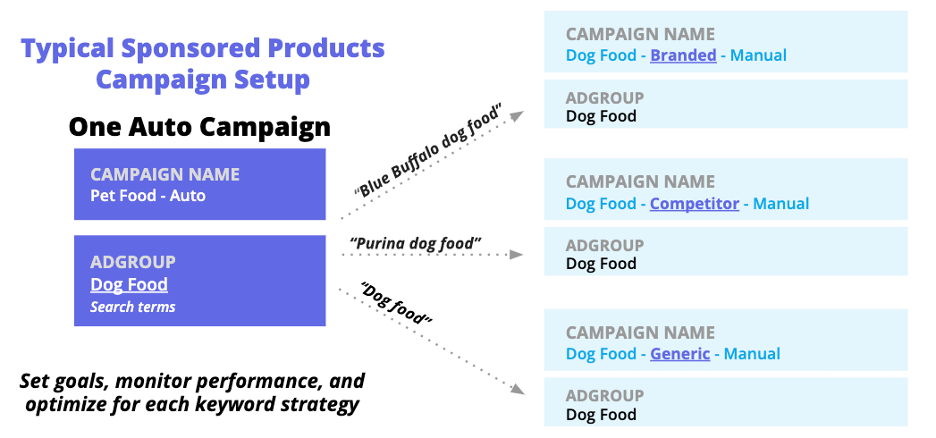
This kind of setup helps avoid what can charitably be called the ‘spaghetti at a wall’ problem. Many sellers want to bid against potentially hundreds of keywords for a given campaign, see what works and go from there. The issue with this strategy was explained by our Director of Insights Andrew Waber in a Marketing Land column. Outside of a small percentage of popular keywords, it will take an unreasonable amount of time to get a proper amount of data volume to make an informed decision about the performance of any of these keywords, assuming you keep your bid constant.
Similarly, blanket bid policies with a steady bid across a wide variety of campaign types with only periodic adjustments, don’t reflect the market reality. Keyword popularity, competition, and conversion rates change constantly. With this rudimentary bid policy, you essentially resign your business to constantly vacillating between bids that are either too high (needlessly wasting spend as your competitors bid-up the second price) or too low (resulting in a very low win rate).
Neither can brands rely solely on Amazon’s bid suggestions provided in Seller Central. These ranges do not factor in bid competitiveness. Instead, they only provide you with a range at roughly the 50th percentile of winning bids. Using that range may not be the best strategy for every term. As we’ve seen, you’re going to value your own branded terms differently than a competitor’s terms, and your bids should reflect that.
Avoiding ‘Death by 1,000 Cuts’
When you don’t take the time to factor in value-per-click within your larger Amazon strategy, the effects aren’t immediate or dramatic. It’s a largely ‘unseen’, behind-the-scenes problem that builds into bigger issues like stagnated growth or market share losses. Conversions you lost out on because your bid was too low won’t show up in any report. Likewise, conversions you won with an ad click that could have been captured organically aren’t broken out for you in Advertising Console.
Similarly, ACOS, despite being a useful metric, won’t give you the full story about the value of your advertising. To wit, if you ever want to improve your ACOS, you could switch to only bidding on your own branded terms. While you’d get a lot of sales as a result of your ad clicks and ACOS would decrease, you won’t be growing your overall business.
It’s worth reiterating that growing your business – not meeting some efficiency target – is the goal of advertising on Amazon. Ask yourself, if you have a high conversion rate on a given keyword, and are generating a lot of sales, is a high ACOS bad? This is why conversion rate, rather than CPC or ACOS, needs to be a big factor in how you value advertising. This is also why we recommend using TACOS, which includes organic plus ad-derived sales, to better determine your overall business trajectory and value of ad spend for a given product.
Because conversion rates are so important in determining a click’s value, that’s also the reason why a rules-based approach fails. You’re unable to factor in changes to conversion rates as they happen, and you instead need to use proxies to determine bids.
When conversion rates rise, what you should be doing is increasing your bid because of that traffic. “Making hay when the sun shines” for lack of a better term. Because rules-based bidding is derived from historical ACOS, you’re basing your decision on a lagging indicator, meaning it takes longer for the rule to trigger, and you potentially miss out on sales.
To be fair, eventually, you will reach a bid where the efficiency on incremental clicks won will result in a prohibitively high ACOS overall. The good news is that with a value-based bidding solution, you are bidding at the exact tipping point of this curve, balancing volume with efficiency.
A good analogy here is a smart thermostat. This system learns how long it takes to heat up your home, adjusts based on the outside temperature to control heat loss, and also movement within your home so you don’t have to reprogram it every time there’s a change in your schedule. This is very different from even a traditional programmable thermostat that requires a lot more consistent user input.
Bringing this back to the ad world – in a rules-based scenario, we see ACOS is going up, which triggers a decreased bid. But if at the same time, conversion rate or revenue per click are going way up, we know those clicks are very valuable and potentially lucrative. A value-based, algorithmically adjusted bidding system is able to adjust for that, while a rules-based system is not.
Outlining a Good Value-Based Bidding Program
Constructing a meaningful value-based bidding system begins with solidifying a few key inputs for each product you plan to advertise:
- What is your pre-ad gross margin? Put another way – how much money do you have to play with on a given product before factoring in any advertising spending?
- What’s your product’s current life cycle stage? Do you need to go past your margin in order to drive sales volume on a product launch? By how much? For how long?
- What’s your profitability tolerance? If your product is at a 30% margin, you can’t be running at a 30% ACOS or you won’t profit. But this tolerance needs to be different based on certain variables:
- Brand vs. Competitor vs. Generic keywords
- Current organic rank
- Current Amazon Best Seller Rank
- What’s your product’s price? Is it competitive with the current top-ranked organic competitors? If not, you may need to consider a longer lead time with advertising to generate sales velocity and review volume that will drive significant organic growth down the line.
All these inputs should help you formulate an ideal bid, at least initially. Then, you need to track your conversion rate (CR) over time and adjust that bid as necessary. This constant management to fit your bid to a commensurate value is why algorithmic bidding is so important and may be your only option to effectively grow your business over time.
You need to know how much to weigh conversion rate changes in relation to what they mean in the future. As an example, if you have a 20% CR over the last 30 days, what’s your conversion rate over the next 30 days? You don’t know. You need to factor in recency and volume in order to determine a level of confidence. Something like Teikametrics’ algorithm does this by using historical data to compute what we believe that conversion rate will be in the future.
Remember, just because you paid a certain CPC over one period of time, doesn’t mean that you will continue to win bids at that rate. This is why bidding to value makes sense.
As an example, you can have a great ACOS, and be bidding $10, but paying $0.50 due to Amazon’s second-price auction dynamics. Your ACOS is good, so it’s easy to just leave bids where they are. However, a competitor can come in, bid $2 and your CPC shoots up, quickly sending your ACOS through the roof. How much should you adjust bids by? If your ACOS goes up 2%, but your bid is 100% more than that, adjusting by a flat amount won’t solve the underlying issue of overbidding.
We’ve built Teikametrics’ business around a value-based bidding philosophy because we know this approach not only works, but also solves real problems advertisers grapple with on Amazon. By putting a value-based bidding structure in place, along with algorithmic help to make changes quickly and intelligently, you set your business up for sustainable, profitable growth over time.


